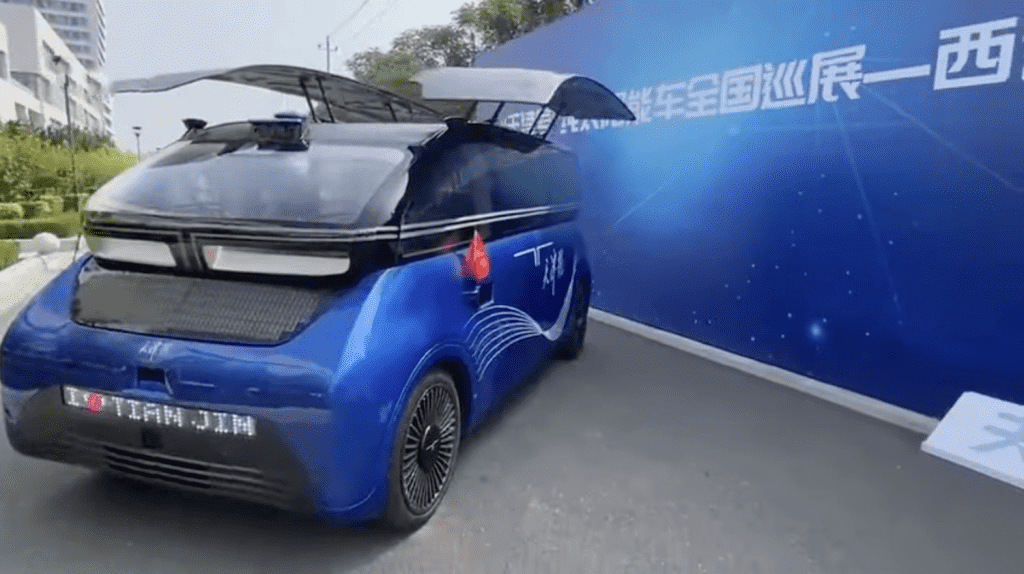China has reportedly built the world’s first 100% solar-powered electric vehicle (SEV) as a culmination of multi-organizational collaboration, according to Electrek. The vehicle is presently on tour in China after being recently displayed at the World Intelligence Conference.

The country’s first-ever vehicle is named Tianjin. It is more than 13 feet (4 meters) long, nearly six feet (1.7 meters) wide, and six feet (1.8 meters) tall, weighing 2,250 pounds (1,020 kg). Even after removing the navigator’s seat, it is large enough to seat four passengers.
The driver’s area is located in the front and is limited to a huge touchscreen display and three controls below it. As shown in the footage, a steering wheel is notably absent in action since the automobile is purportedly equipped with Level 4 autonomous driving.
It’s tough to tell how effectively the system works when the vehicle is driven on empty roads. Level 4 automation is difficult to achieve, and companies like Tesla and Waymo have been exploring it for years.
The vehicle’s top speed is reportedly 49 mph (79.2 kph), which is adequate for an automobile that will most likely be utilized in urban surroundings. However, current restrictions for automated driving require vehicles to operate mainly in specific areas and are primarily geared at ride-sharing, which explains why the navigator’s seat is missing.
The solar panel on the car is 87 square feet (8.1 square meters), significantly larger than any other solar module. On sunny days, this can produce up to 7.6kWh of electricity. In addition, the vehicle has a battery with an energy storage density of 330 Wh/kg.

Driving this vehicle is projected to reduce carbon emissions by 55 pounds (100 lb) for every 62 miles (100 km). However, the maximum tested range on this is 47 miles (74.8 km).
According to reports, the car was manufactured in five months by a combination of 42 companies and three institutions. While the specifications aren’t impressive, the automobile includes 47 advanced technologies, some of which are already available in high-end vehicles.

Apart from the Level 4 automated driving and missing wheel, there isn’t much that appears to be of the highest class here. We’re interested to see what else the team has planned and how it intends to put it into action. However, we can take these claims with skepticism for now.
Since the solar-powered car is currently on tour in China, we hope to learn more about it shortly.


